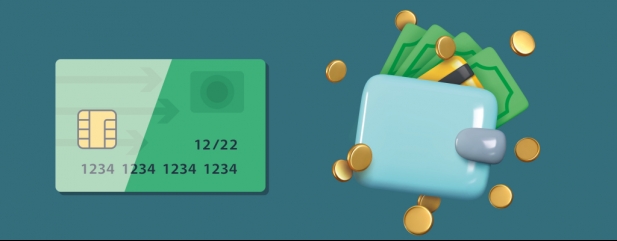Archived article
Please note that tax, investment, pension and ISA rules can change and the information and any views contained in this article may now be inaccurate.
Using a dealing account? You could be better off with an ISA or SIPP

The surge in online brokers means that more and more people have opened trading accounts. But lots of newcomers to investing have opened the wrong account type that’s costing them hundreds (or even thousands) in tax that they could avoid.
Many people who use online trading platforms will just opt for the standard account, often called a dealing account or general investment account. Many might think this is an obvious starting point for their investing journey. But actually, they could be far better off in a tax-efficient account that protects their investments from two different types of tax.
WHAT IS A DEALING ACCOUNT?
A dealing account is a basic investment account that most UK residents can open. There is usually a wide range of investment options available and there are no restrictions on how much you can invest or how often. You can even open a dealing account for a child, where a parent or grandparent is the trustee.
You just open a dealing account, can transfer money in from your bank or debit card and then start investing in whatever you pick. Alternatively, you can transfer money into the account from other accounts you already have open. One of the big appeals is that there are no limits on when you can take out the money.
WHY ISN’T IT ALWAYS SO GREAT?
Dealing accounts have no specialist tax perks, which means you’ll have to potentially pay two different taxes on the money. If your investments pay out dividends then you could be liable to pay dividend tax.
Everyone gets a £2,000 dividend tax free allowance each tax year, meaning they can earn dividends up to that level before they have to pay tax. After that point you’ll pay tax at 8.75% for basic-rate payers, 33.75% for higher rate payers and 39.35% for additional rate payers.
The next tax you could be liable for is capital gains tax. This is a tax on the growth of your investments, and is only paid when you sell that investment (which is called realising the gain). Again, there is a tax-free allowance, whereby you can generate up to £12,300 of gains on your investments each tax year before you have to pay capital gains tax. After that you’ll pay it at 10% for basic-rate taxpayers and 20% for higher and additional rate payers.
With most providers you’ll get a tax statement after the end of the tax year stating how much you’ve generated in dividends and capital gains tax, which you can then use for your tax return.
WHAT ARE MY OTHER OPTIONS?
Both ISAs and pensions have tax perks, meaning that they could be a better option if you haven’t maxed them out already. With both you pay no dividend tax and no capital gains tax. The tax on withdrawals differs a bit between the two: with an ISA you pay no tax, but with a pension you can take 25% of the pot tax free and the remainder of the withdrawals are subject to income tax.
Let’s tackle the Stocks and Shares ISA first: it has the same investment range as a dealing account, with the same wide range of options. It’s also easy-access, meaning that you can take money out whenever you want without penalty. The only restriction is on the amount you can pay in – which is limited to £20,000 per tax year per person.
If you’re using a dealing account for a child you could use a Junior ISA instead. It has the same tax perks as the adult version and has the same investment range but has a limit of £9,000 a year that you can pay in, per child. The money will be tied up until they are 18 years old, at which point it’s theirs to use or keep invested.
Let’s cover pensions and SIPPs too. A SIPP has more differences to a dealing account as the money is tied up for a long time. Any money paid into a pension can’t be withdrawn until retirement age, which is currently 55 but is rising to 57.
However, it comes with an extra juicy tax perk. As well as no dividend tax or capital gains tax being due, you will get tax relief on the money paid in. It means you get a 20% top-up to your contributions. Find out more of the nitty gritty detail in this article.
HOW MUCH WILL THE TAXES REALLY COST ME?
It really depends on how much you’re investing, the level of dividends you’re getting from your investments and how large your gains are. But let’s look at a couple of scenarios.
You generate £5,000 of dividends: An investors would pay dividend tax on £3,000 of this (with the other £2,000 covered by their tax-free allowance), which for a basic-rate payer is £262.50 and for a higher-rate payer is £1,012.50. An additional rate payer will be hit with a £1,181.55 tax bill. With an ISA this tax
bill would be zero.
You generate £15,000 of gains: You’d pay tax on £2,700 of your gains, with the rest covered by your annual tax free allowance. For a basic-rate taxpayer this would result in £270 of tax, while for a higher or additional rate payer it would be £540. Again, with an ISA you’d pay no tax.
Important information:
These articles are provided by Shares magazine which is published by AJ Bell Media, a part of AJ Bell. Shares is not written by AJ Bell.
Shares is provided for your general information and use and is not a personal recommendation to invest. It is not intended to be relied upon by you in making or not making any investment decisions. The investments referred to in these articles will not be suitable for all investors. If in doubt please seek appropriate independent financial advice.
Investors acting on the information in these articles do so at their own risk and AJ Bell Media and its staff do not accept liability for losses suffered by investors as a result of their investment decisions.
Issue contents
Exchange-Traded Funds
Feature
- Tesla’s undoubted progress still unlikely to change the minds of fans or sceptics
- Inflation is the worst over? Why we may soon get relief from rising prices
- Why Johnnie Walker-owner Diageo is a wonderful stock to own
- Find out which sectors in emerging markets are the cheapest
- Emerging markets: Views from the experts
Great Ideas
Investment Trusts
News
- Coca-Cola provides new demonstration of its pricing power in Q2
- Pressure mounts on Vodafone to find acquisition fix for growth conundrum
- Link report reveals 40% UK dividend growth for Q2 but also concentration risk
- Abcam deals big blow to UK investors in battle to list growth companies
- Why athleisure is holding up but demand for fast fashion is fading

 magazine
magazine








